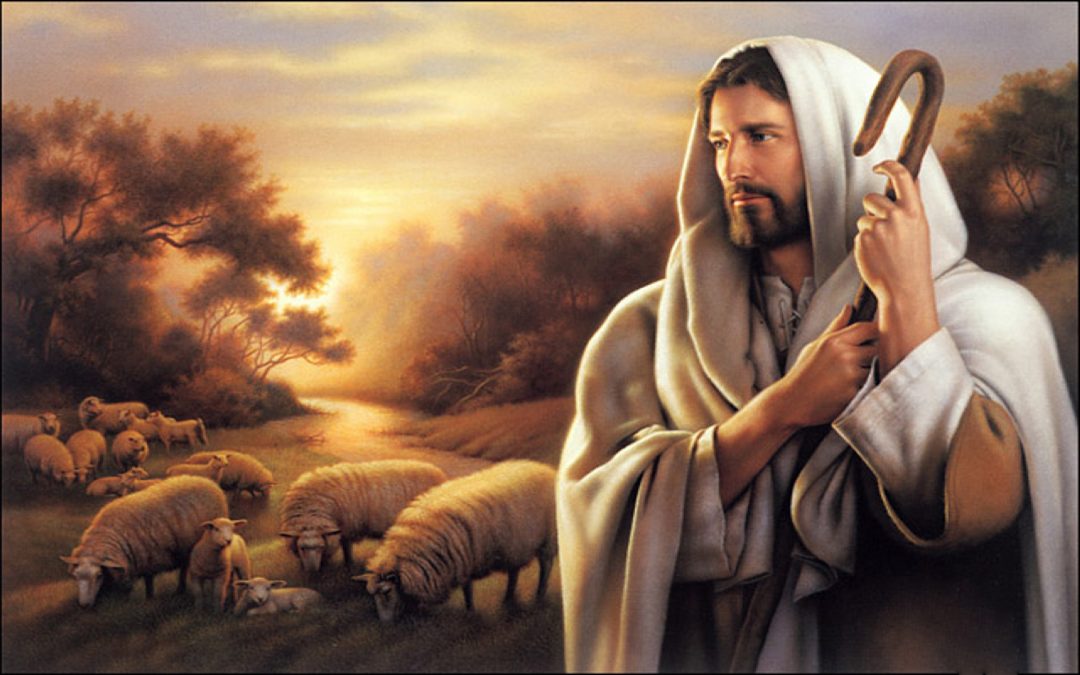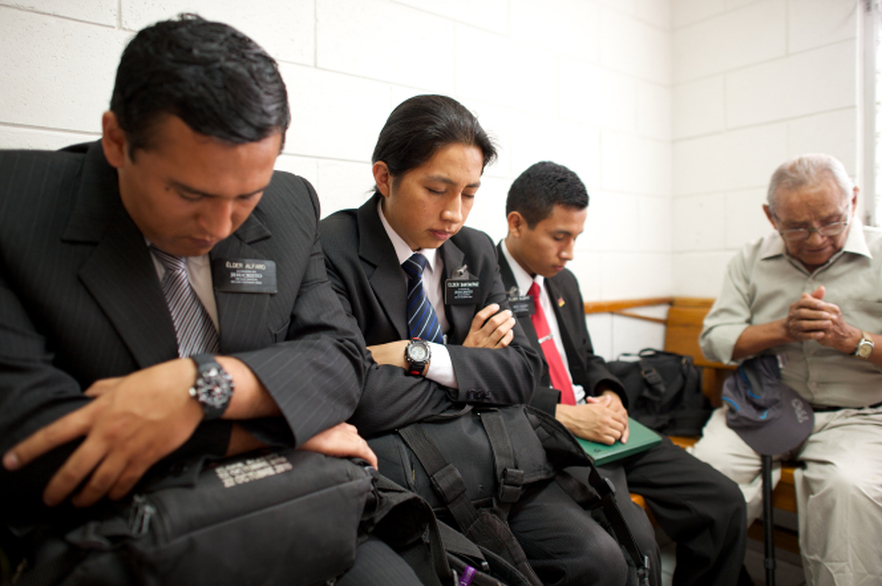London, United Kingdom
“My sister needs her baby christening NOW!” the caller urgently informed me.I dashed round to the address, and found a plump baby bouncing on her mother’s knee, surrounded by a sea of toys, discarded nappies, and teething rings, in the rudest of health, definitely not knocking on limbo’s door. Neither mother nor aunt showed any sign of imminent demise or a hell-fire conversion; so, after half an hour of failing to find any evidence whatsoever why they were in such a rush, I gently asked why the baptism needed to be so soon.
“Why, it’s the christening gown,” the mother explained, as if stating the obvious. “It’s a family heirloom, and if she puts any more weight on, we’ll never get her into it.”
The minister, not willing to waste an opportunity to explain the purpose and intent of baptism, says that he used the christening gown as an analogy to being ‘clothed in Christ,’ but did not administer the baptismal rite until several weeks later, and in church.
Being ‘clothed in Christ’ is not a phrase commonly heard in sermons from the pulpits of The Church of Jesus Christ of Latter-day Saints, although I am left wondering why it is not. The condition is referred to in the Scriptures, although I would alter the phrase just a little to read in a modern way as ‘clothed WITH Christ,’ meaning that disciples were to adopt the whole character and personality of Jesus Christ. Yes, it is a tall order, but it is an order all the same.
The weight that Paul directed us in ‘putting on Christ’ cannot be too greatly stressed. In considering what he meant we must step outside the confines imposed by considering his words randomly and not properly focussed, requiring no more than our notation of them as pretty quotations. Only in this way can we find the profound spiritual truth that is the key to then transformation that comes to those that are born again.
Both Saint Paul and the Reverend David Wilbourne unite in categorising ‘putting on Christ’ with the essential initiatory ordinance of baptism as the door through which all must pass to obtain mystical union with Jesus Christ. That it is an essential ordinance is expressed by Jesus Himself in words that cannot be misunderstood, in spite of Nicodemus’ apparent misunderstanding the Saviour’s words:
“There was a man of the Pharisees, named Nicodemus, a ruler of the Jews: The same came to Jesus by night, and said unto him, Rabbi, we know that thou art a teacher come from God: for no man can do these miracles that thou doest, except God be with him. Jesus answered and said unto him, Verily, verily, I say unto thee, Except a man be born again, he cannot see the kingdom of God. Nicodemus saith unto him, How can a man be born when he is old? Can he enter the second time into his mother’s womb, and be born? Jesus answered, Verily, verily, I say unto thee, Except a man be born of water and of the Spirit, he cannot enter into the kingdom of God. That which is born of the flesh is flesh; and that which is born of the Spirit is spirit. Marvel not that I said unto thee, Ye must be born again”
John’s mention of Nicodemus’ misconception of being ‘born again’ allowed Jesus to more narrowly define his teaching about the nature and intent of the sacred rite of water baptism and the consequential endowment of the Holy Ghost.
Jesus pointedly modifies his proposition in his second explanation to the Pharisee by including a topic he had not previously brought to the attention of his questioner.
In verse three, Jesus says that baptism enables a person to see the kingdom of God, but in verse five he enlarges and qualifies the need for baptism by saying that without water baptism a person ‘cannot enter into the kingdom of God.’
The difference between seeing God’s kingdom and entering God’s kingdom is that the kingdom of God has to be seen and recognised before it can be entered.
Being born again of the water means baptism by total immersion, and being born again of the Holy Spirit means receiving the gift of the Holy Ghost, also called the Holy Spirit.
These two rites that Jesus intertwines as primary evidence of conversion are the pattern and requirement of entrance into the kingdom of God by those who have first seen and recognised the kingdom of God is found at large throughout the New Testament books.
John the Baptist declared the advent of Jesus and also spoke of the gift of the Holy Ghost that would be bestowed on those who had seen the kingdom of God and submitted to baptism by immersion at his hands.
“I indeed baptise you with water unto repentance. But he that cometh after me is mightier than I, whose shoes I am not worthy to bear: he shall baptise you with the Holy Ghost, and with fire” (Matthew 3:11)
“John answered, saying unto them all, I indeed baptise you with water; but one mightier than I cometh, the latchet of whose shoes I am not worthy to unloose: he shall baptise you with the Holy Ghost and with fire” (Luke 3:16)
For as many of you as have been baptised into Christ have put on Christ. (Galatians 3:27)
We cannot stand as examples of Jesus’ unlimited love for us if we hold grudges, hate our brothers and sisters, speak evil of them, backbite, gossip, ignore those we dislike, or are resentful and do not forgive others?
Putting on Christ demands that we rid ourselves of the carnal destroyers that betray the influence of Satan in our lives and actions in associations, and replace them with Christian virtues that inexorably follow when we put on Christ. God demands that our lives are to reflect His character and this only happens when we “put on Christ.”
However, Putting on Christ requires us to change.
Saint Paul wrote:
“But now ye also put off all these; anger, wrath, malice, blasphemy, slander, and filthy language out of your mouth.” –Colossians 3:8
These and similar Bible precepts are directed to the fashioning of spiritual beauty in every redeemed life. We are to put away all that is sinful, all that is marring, every blot and blemish, every unholy desire, feeling, and affection, and everything that defiles us. And we are to put on whatever is lovely and Christlike.
The great work of Heavenly Father in the lives of Christian saints is the creation of righteousness in them. We are to abandon our deformities, our faults and infirmities, our inadequate and mean-spirited lives and move towards the spiritual beauty that God our Father fashioned us to portray.
Arise and shine – get thee up, be illuminated – and then let your light shine … for it is by your light that souls are brought to God –Isaiah 60:1
When people see you, do they see the Light of the Holy Spirit? The mark set before us is the likeness of Christ, which, at last, we shall attain!
“We
shall be like Him, because we will see Him as He really is!” 1 John 3:2
It is never too early to start ourselves along that pathway and God will guide us if we place our trust in him, hold fast to the iron rod, and endure to the end.
Latest posts by Ronnie Bennett-Bray, Moroni Channel (see all)
- Hundreds of Youth to Gather for 2025 Nationwide FSY in Korea - April 26, 2025
- Norway to host International Young Single Adult (YSA) Conference - April 19, 2025
- Youth from Across Asia to Gather in Bangkok for 2025 Latter-day Saint FSY Conference - April 19, 2025
- Asia’s Youth Prepare for Regionwide FSY Conference in Bangkok - April 19, 2025




